Insights into the forces shaping our industry.
IoT for Free
Industry Commentary
We attended LightFair, as usual and in general it felt a little less crowded, with fewer exhibitors and lighter foot traffic. LFI has become the mega-show for the lighting industry; but is now facing multiple competitive shows across the country (LED Show, LEDucation, LightWest, Strategies in Light and several more). LFI 2019 was truly the biggest showcase for controls; with the advent of LED, lighting has become a medium for new markets: Spectral Health, UV sterilization, indoor farming, animal ontogeny and more. And then there’s the Internet of Things… a societal movement to measure, record and analyze everything. Lighting has a significant seat at the table for IoT; it offers the physical geography and mechanical structure to support the sensors to measure activities, the geography has a ready power supply, and LED offers up a PC board that can be adapted to support communication systems (Bluetooth, Dali, etc.).
As a result, LFI had control systems on full display… color tuning, security, asset management, predictive maintenance, space utilization, access control and more. All pretty cool stuff! For the legacy lighting guys… it’s bewildering. But then there’s the basic principle of commerce. Products, services, solutions all require an interested and motivated buyer; that is convinced that product or service is valuable enough to purchase it. History has been unkind to many great new things: Edsel, Beta VCR, even Elon Musk’s solar shingles… so what about the fate of IoT?
Every person I met with at LFI, I asked them about their presence in IoT (or ‘Smart Lighting’). All said they either have a product or the are actively working on their approach. To each of them, I asked the same follow up question: Who is buying the solution? Specifically, what kind of company and the title or function of the person that makes the buying decision? I got the uniform response from each person… we don’t know yet.
At Egret, our value proposition is that we connect our clients’ product to a customer and from that connection and understanding, we can identify talent that will deliver the results, with quicker ramp up; as they already ‘get’ how the company makes and sells products. Steve Jobs was brilliant, but when he personally recruited the CEO of Pepsi to take over Apple… the leadership skills of running a consumer beverage company to a technology company didn’t align.
The merits of IoT have been explained to me in many discussions and presentations, as listed above. But the question that still remains unanswered is who will invest in a system that tracks asset management, space utilization, access control (which is generally embedded in a building management system), and more?
I see specific applications: IOU’s for example have millions of miles of coverage with assets spewed across their domain… sensors in each asset will immediately update their decades old drawings and files to reveal where each asset is, the condition of it and predict maintenance for it. IoT for an IOU needing asset management and predictive maintenance is a market case.
Asset management in a hospital… makes sense because their ‘stuff’ is in constant motion; carts, instruments, and more.
Security installations could use facial recognition as well as radiation or firearms detection… makes sense.
Retail stores can use tracking systems to monitor the flow of customers and communicate with them as they shop… coupon for sweaters, for example. And of course, security cameras. Target is a huge test case for smart lighting systems; and they’re testing it because they’ve had a long relationship with Acuity and Acuity has been investing in IoT and tech companies for several years… they needed a notable test case, and I’m sure they provided Target with a compelling financial offer to jointly test the systems. How much will brick and mortar stores embrace IoT? Too soon to tell.
But ‘smart office buildings’ is an unknown. I’m skeptical that a CFO or CEO would approve a sizable cost differential for construction that proposed an adder for: space utilization, asset management, predictive maintenance, color tuning, temperature sensing, occupancy, access monitoring, etc. The ROI is unknowable and subject to estimations with little facts. Which leads me to… Free!
It does make sense that a major lighting manufacturer would ‘throw in’ IoT enablement for no extra charge, as long as the building owner signed a monthly subscription service to produce the data from the sensory systems. And if that makes sense… then which manufacturer has the data tracking and analytics capability to provide that service?
If IoT can be leveraged into subscription services; which provides steady cash flow… then there’s a business case for entering that space. But of the hundreds of booths at LFI, how many of them have the capital to invest into such an approach? It takes a lot of money and resources to create a platform of sensors, data aggregation and data analytics and make that work… and be reliable.
LFI was interesting in that it brought to the public the concept that it isn’t just lighting any more, it’s lighting technology. In fact, a client specifically told me that he is branding their company as a technology company….
Will a contractor, rep or lighting designer view a lighting company as a technology company? What resources will that company have to deploy to train the channel partners to accept their premise, and who or what title is the target buyer for lighting technology? We don’t know yet.
It’s a remarkable time to be in the lighting industry… and regardless of where you see the role of IoT, lighting will become more technologically complex going forward. Jump on board, or get out the way.
